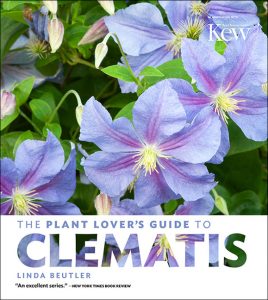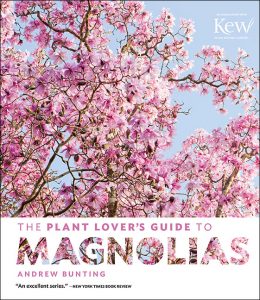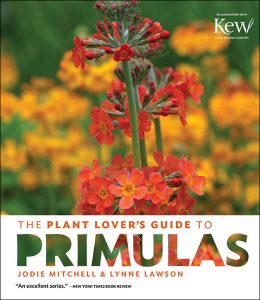The Plant Lover’s Guides
Posted in From the Library on August 23 2016, by Esther Jackson
Esther Jackson is the Public Services Librarian at NYBG’s LuEsther T. Mertz Library where she manages Reference and Circulation services and oversees the Plant Information Office. She spends much of her time assisting researchers, providing instruction related to library resources, and collaborating with NYBG staff on various projects related to Garden initiatives and events.
 When I first heard that Timber Press was publishing a series called The Plant Lover’s Guides, I was excited. I was working as an intern in the library at Longwood Gardens and in the process of falling in love with plants. My roommate at the time was obsessed with sedums and other succulents. “You know,” I mentioned to him casually, “there is a new book that is all about sedums that we are getting for the library.” His eyes lit up at the news, and lit up once again when I put the new book into his hands some months later. It was a perfect match. 2014 saw the release of guides to Sedums, Snowdrops, Dahlias, and Salvias. In 2015, guides to Epimediums, Tulips, Asters, and Ferns arrived. Now, in 2016, we have four new guides—Clematis, Magnolias, Hardy Geraniums, and Primulas.
When I first heard that Timber Press was publishing a series called The Plant Lover’s Guides, I was excited. I was working as an intern in the library at Longwood Gardens and in the process of falling in love with plants. My roommate at the time was obsessed with sedums and other succulents. “You know,” I mentioned to him casually, “there is a new book that is all about sedums that we are getting for the library.” His eyes lit up at the news, and lit up once again when I put the new book into his hands some months later. It was a perfect match. 2014 saw the release of guides to Sedums, Snowdrops, Dahlias, and Salvias. In 2015, guides to Epimediums, Tulips, Asters, and Ferns arrived. Now, in 2016, we have four new guides—Clematis, Magnolias, Hardy Geraniums, and Primulas.
The series of books represents a partnership between Timber Press and Kew Gardens, and so the content is predictably very good. Each guide has a different author and is laid out into five sections. The first section addresses why the author loves the topic plants, (for example, “Why I Love Magnolias”), followed by a section about designing with the plants, understanding the plants, plant profiles of selected cultivars or species for the garden, and finishing with a section on growing and propagating the plants. Throughout all of the aforementioned sections, each book includes a plethora of colored photographs that are guaranteed to stir the hearts of readers already enamored by the botanical stars of each work.
 It’s tempting, based on the sheer beauty of these books, to simply view them as novel gifts for those who already love a particular kind of plant. They are certainly wonderful in this regard, but beyond that they have additional value. These books are useful tools for plant identification, as many cultivated plants spread from their original source and may occur in sites where they were not initially planted. Additionally, cultivated plants are not always fully addressed in official floras of various regions, and so resources like the Plant Lover’s Guides books are useful for home gardeners, extension agents, and botanists alike. Hybrid origin is also addressed in these books, meaning that it is possible to know where the plant (or its parents) came from originally—perhaps Russia, China, or the Netherlands. The inclusion of photographs is an important part of this—for some genera that include thousands of cultivars, pictorial guides to garden varieties fill in a gap left by more rigid botanical literature.
It’s tempting, based on the sheer beauty of these books, to simply view them as novel gifts for those who already love a particular kind of plant. They are certainly wonderful in this regard, but beyond that they have additional value. These books are useful tools for plant identification, as many cultivated plants spread from their original source and may occur in sites where they were not initially planted. Additionally, cultivated plants are not always fully addressed in official floras of various regions, and so resources like the Plant Lover’s Guides books are useful for home gardeners, extension agents, and botanists alike. Hybrid origin is also addressed in these books, meaning that it is possible to know where the plant (or its parents) came from originally—perhaps Russia, China, or the Netherlands. The inclusion of photographs is an important part of this—for some genera that include thousands of cultivars, pictorial guides to garden varieties fill in a gap left by more rigid botanical literature.
 It is important to add the caveat that each of these guides goes into a different amount of detail, depending on the group of plants. Ferns, for example, represent a huge group of plants, (over 10,000 species by some counts), and the Timber Press guide presents 140 in total for the home gardener. That is certainly not representative of the entire fern clade, although it is still a useful resource. The scope of each book is clearly stated in its introduction, which is beneficial for the reader.
It is important to add the caveat that each of these guides goes into a different amount of detail, depending on the group of plants. Ferns, for example, represent a huge group of plants, (over 10,000 species by some counts), and the Timber Press guide presents 140 in total for the home gardener. That is certainly not representative of the entire fern clade, although it is still a useful resource. The scope of each book is clearly stated in its introduction, which is beneficial for the reader.
The Plant Lover’s Guides sing a siren song to their respective plant lovers. Sitting innocently on a desk or table, they beg to be picked up and read. If you’re an enthusiast for any of the plant groups mentioned, give in to the draw, and find your match.

